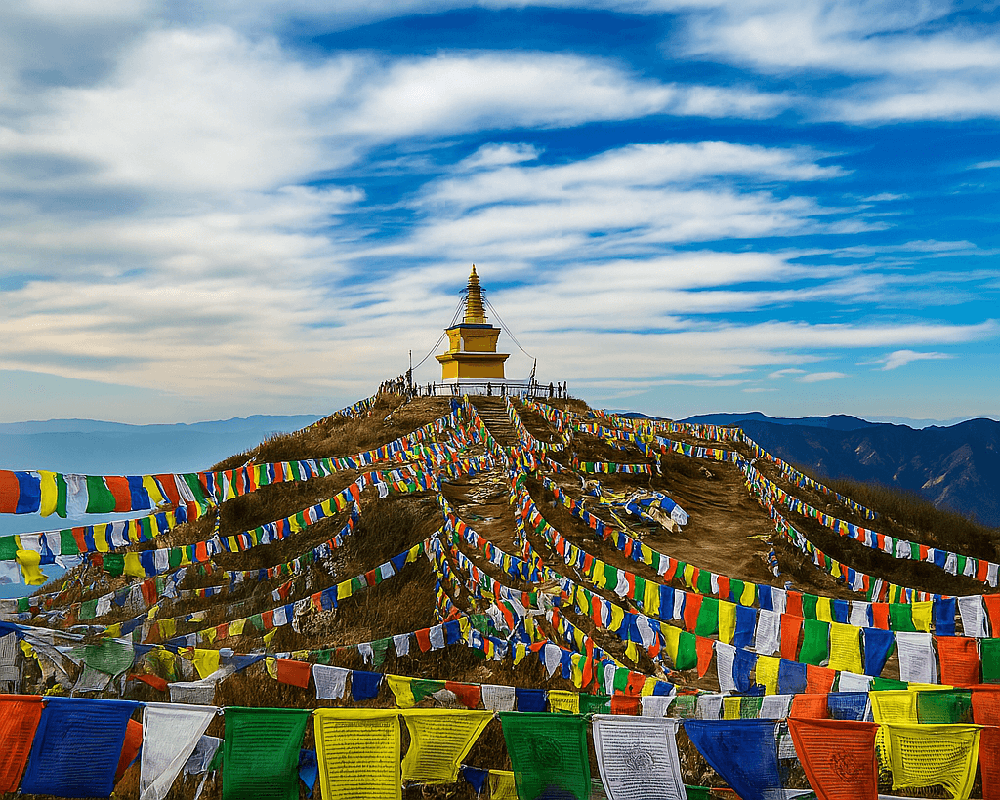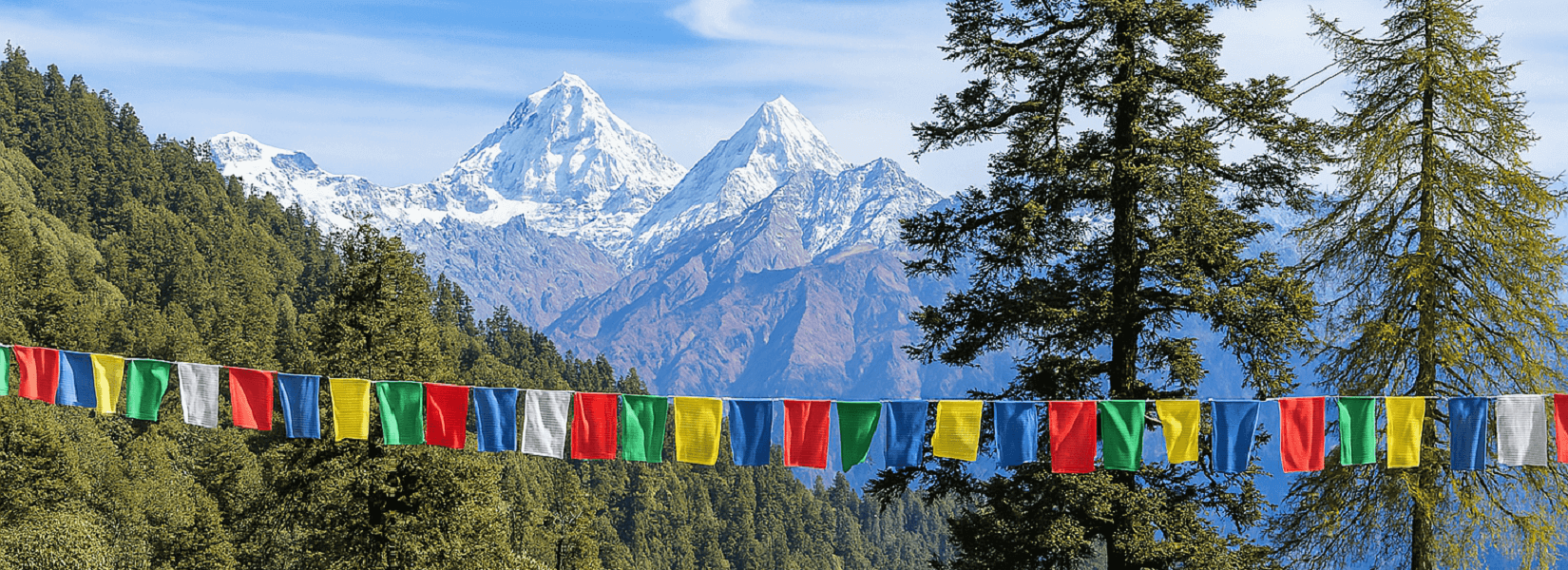How Difficult is the Helambu Trek Nepal?
The Langtang Helambu Trek spans over 5 days. Trekkers are required to walk about 5 to 6 hours on average over the varied terrain. The trail features a mix of gradual ascents, steep cimbs and descents. This makes the journey more challenging than a simple nature hike. But, in comparison to other high-altitude treks, this trek is far easier. In the Himalayan grading system, this trek has been labeled as a relatively easy to moderate level. There are no technical sections and an extreme altitude. That's why this trek is perfect for first-time trekkers, families and older hikers. Although prior trekking experience is not required, trekkers should have good endurance and be able to walk 5 to 6 hours per day.
If you have done any 2 to 3-day hikes before, this journey will feel like a seamless experience to you. The trekking trail in Helambu Trek stretches across sone steps, forts paths and ridgelines. So you will need to be careful with your footing. Similarly, the steep segment requires a good level of stamina. But you will get enough breaks along the way as well. Altitude sickness is not extreme during this trek. However, mild shortness of breath or dizziness may occur above 3,500 meters. If you follow a well-paced itinerary and take enough acclimatization time, you can nullify this aspect as well.
Best Seasons For Trek
Nepal experiences fourdistinct seasons across the year. So, depending on the period of your preference, the experience, comfort and difficulty level of Helambu Trek Nepal may differ. Autumn (September to October) and spring (March to May) are the most suitable periods for treks in Nepal.
- Spring (March to May): Spring is one of the best times for the Helambu Trek. This season has comfortable temperatures, clear skies and colorful blooming. You will notice how the entire landscape comes alive with blooming rhododendrons. The comfortable trekking conditions also make the journey memorable. This trekking window frame is ideal for nature lovers, beginners and wildlife and birdlife enthusiasts. The temperatures of the Helambu region stay around 10°C to 20°C during the day in spring. As for the night temperature, it averages around 5°C to 0°C.
- Autumn (September to November): Like spring, autumn is widely considered the best season for trekking in Nepal. Langtang Helambu Trek is no exception. This season has crystal-clear mountain views, mild temperatures and a low precipitation rate. So, this fall season is known for the perfect balance of weather and trail conditions. The atmosphere in the country also has a festive essence as major celebrations like Dashain and Tihar take place during this season. The daytime temperature of Helambu is around 10°C to 18°C and at night, it can fall upto 5°C to -2°C.
What Trekking is Like in Off-Seasons?
Doing the Helambu Trek Nepal can be a great choice for solitude seekers during the winter season (December to February). However, this season comes with harsh cold temperatures at higher elevations. Snowfall is also common in the region, especially at Tarkegyang and Ama Yangri Peak. Thus, the accumulation of snow on the trail can make it slippery and harder to navigate. The teahouse at the remote and high altitude remains closed during this off-season. As for monsoon season (June to August), it is the least recommended period for trekking in the country.
The Helambu region experiences heavy rainfall during this period. This leads to slippery and challenging trails. The risk of landslides and leech infestation along the trail can significantly affect the experience. Likewise, due to clouds and fog, the mountain visibility is blocked most of the time. You can trek in this season if you are an experienced trekker who doesn’t mind the extra set of challenges. But if you are a beginner and prefer comfort, you should do this trek only during spring or autumn.
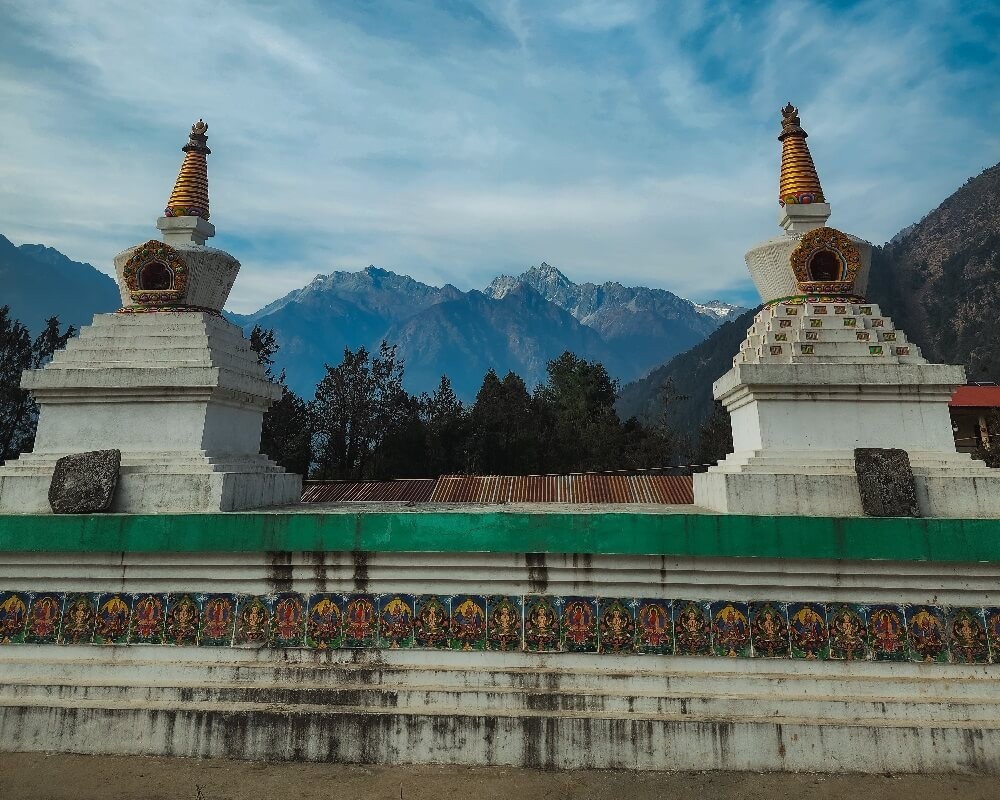
Permits Needed for Trekking Helambu
Helambu is one of the protected areas in Nepal that requires specific permits to enter. The permit system in Nepal regulates tourism and ensures the safety of trekkers. The Helambu region falls under the jurisdiction of Langtang National Park. Thus, trekkers must obtain a national park permit for this trek. Unlike other high-altitude adventures, you will need to collect only one permit for this trek.
Permit Required for Helambu Trek
- Langtang National Park Entry Permit
Children below the age of 10 are exempt from the fee requirement of the permit. Trekkers can obtain this permit from the tourism board office in Pradarshani Marg Kathmandu. This permit is also issued at the park checkpoint in Sundarijal. However, to avoid delays, it is advisable to get this permit in Kathmandu. Bring a copy of your passport and passport-sized photos when applying for the permit. Keep the permit safe throughout the trek, as multiple checkpoints may request verifications.
Note: For your Langtang Helambu Trek with Marvel Adventure, we will take care of the application and collecting procedure. You will be able to enjoy a seamless experience with us without the need to worry about anything.
Altitude Sickness and Acclimatization
Acute Mountain Sickness (AMS) occurs when it is hard for the body to adapt to lower oxygen level atmospheric conditions. If the pace and rest period isn’t managed properly, the symptoms may start to appear after crossing 3,000 meters. Headache, dizziness, nausea, etc are some noticeable symptoms of AMS. As this trek doesn’t exceed to extreme altitudes, there are not any risks of more dangerous variations. Still, it is the safest option to learn about the preventive measures of altitude sickness regardless of the scale of the threat.
Altitude Sickness Preventive Measures
- Follow a gradual ascent and don’t climb too high too fast
- Eat a healthy and nutritious diet, you need to replenish the lost energy during the trek
- Drink 3 to 4 liters of water per day to avoid dehydration
- Avoid drinking alcohol and excessive caffeine as they are contributing factors to AMS
- Avoid overextertion and allow sufficient time for proper sleep and recovery
- Some trekkers take altitude medication like Diamox, but you should consult a doctor before use
What to Do if Symptoms Occur?
- Inform your guide immediately after you start noticing symptoms
- Stop and rest; do not continue ascending if symptoms appear
- Drink plenty of fluids and eat carbohydrate-rich meals to provide energy
- Avoid drinking alcohol and sleeping pills as they can make breathing difficult and worsen the condition
- Monitor the symptoms closely and descend immediately if necessary
- Use a pulse oximeter to see the oxygen drop level
- Use oxygen if symptoms persist; it will give temporary relief
- If symptoms worsen, seek medical assistance and evacuate (covered by travel insurance)
Training and Preparation
Helambu Trek Nepal is a relatively easy to moderate level of trek. This exciting short trek doesn’t require any technical skills. But, it still demands a reasonable level of fitness and stamina. The trekking trail involves continuous ascents and descents. Some of them are steep and physically demanding. Thus, proper training before the trek is essential to enhance endurance, reduce fatigue and minimize injury risks. Trekkers need to develop their cardiovascular endurance, leg strength and core stability. This will help them to enjoy the trek without excessive strain. Your pre-trekking plan should be at least 4 to 6 weeks long before departure.
For cardio, you can include exercises like running, cycling, swimming, or hiking with a backpack. Aim to secure at least 30 to 60 minutes of cardio per session. Similarly, for leg strength, you can include exercises like squats, lunges, calf raises and step-ups. Other exercises like planks, Russian twists and deadlifts help with stability, especially on the rocky paths.
Note: You need to schedule properly for each aspect; training 3 to 4 times a week is enough. Go on weekend hikes with loaded backpacks to simulate the trekking conditions. Most trekkers suggest this is the best way to prepare for any kind of high-altitude trek.
Mental Preparation Part
High-altitude trekking also requires a good level of mental endurance. During this journey, you will need to face long hours of walking across varying terrain. Similarly, it is necessary to adjust to unpredictable weather and general accommodations. Likewise, the ability to push through fatigue, stay motivated and handle discomfort is crucial. The trekkers typically endure serious altitude difficulties due to mental challenges to adapt.
Mental Preparation Tips for Helambu Trek
- Set realistic expectations; trekking in the Himalayas is not a luxury vacation
- Expect basic facilities with limited services; embracing simplicity makes the experience more enjoyable
- Train your mind for long hours of trekking
- Learn to embrace discomfort and uncertainty. Challenges are part of the experience and make the journey rewarding
- Have patience and stay firm in self-confidence in the times of fatigue, soreness, and doubt
- Stay positive and flexible; don’t let minor discomforts ruin your experience
- Practise mindfulness and focus on the experience
- Prepare yourself for social interaction and cultural differences
- On tough days, remind yourself why you started
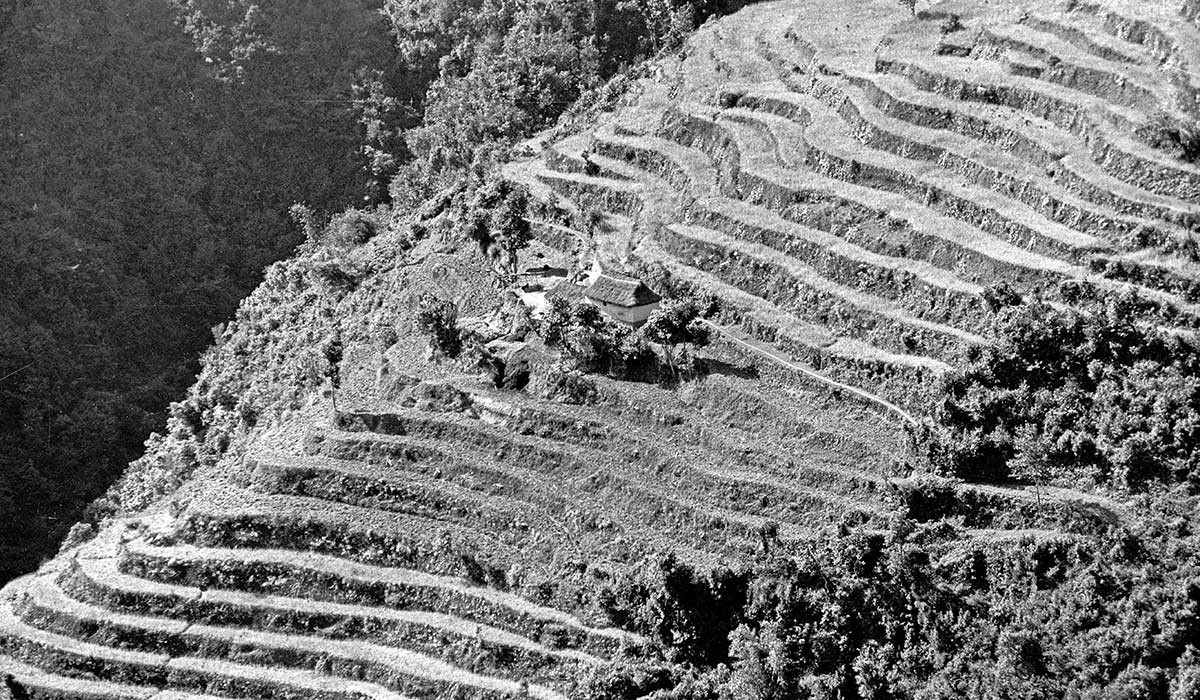
Packing List For Helambu Trek
Packing for the Langtang Helambu Trek needs to be in a stepwise order to ensure your comfort and safety. The packing trick for mountain adventures in Nepal is to pack light but efficiently, being mindful of the essentials. It is important to carry only necessities without overloading the backpack. The luggage beyond the weight limit carried by porters (usually 15 kg/ 33 lbs) needs to be carried by you. Here is the ultimate packing list for this short and exciting journey that has been recommended by our experts.
Clothing and Footwear
- Wool or synthetic base layers (top and bottom)
- Thermal innerwear for colder months
- Insulated fleece jacket or softwhell jacket
- Fleece sweater
- Down jacket
- Waterproof/ windproof jacket
- Lightweight trekking pants
- Shorts and comfortable pants
- Waterpproof trouser
- Comfortable trekking boots (high ankle, waterproof and well-broked-in)
- Sports or trainer shoes
- Sandals or flip-flops
- Woolen and cotton socks
- Warm beanie or wool hat
- Buff or neck gaiter
- Sun har or cap
- Light and insulated gloves
Essential Gear and Equipment
- Sunglasses with UV protection
- Trekking poles
- Backpack (30 to 40 liter) with rain cover
- Duffle bag
- Sleep bag (best if four-seasonal)
- Headlamp with an extra pair of batteries
- Water bottles or hydration bladder
- Powerbank
- Map, Compass and GPS
Personal Hygiene and Toiletries
- Soap and shampoo
- Toilet paper and wet wipes
- Quick-dry towel
- Moisturizer and lip balm
- Sunscreen with UV protection
- Toothbrush and toothpaste
- Footpowder and deodorant
- Female hygiene products
- Water purification tablets
- Hand Sanitizer
- Personal medication
- First aid kit
Miscellaneous Items
- Snacks and energy bars
- Notebook and pen
- Sleeping mask and earplugs
- Camera and smartphone
- Cash (converted to Nepali currency)
- Waterproof bag or dry bags to protect electronic
- Entertainment option
- Board games and card games
Safety Tips and Precautions
The Langtang Helambu Trek may be a relatively easy endeavor, but like any journey in the Himalayas, it comes with potential risks. During this trek, you will need to be careful about the risks associated with unpredictable weather. Trail difficulties and altitude sickness are other aspects you need to be mindful of. To aid you secure an unforgettable experience, here are some helpful safety tips.
- You need to learn to recognize the symptoms of altitude sickness and don’t overlook the symptoms no matter how minor they are
- Pack necessary gear and clothes for the journey to keep yourself warm and comfortable in the varying climatic conditions
- Trek with a guide or group and be mindful of trail intersections and forest areas
- Don’t go wandering off on your own without informing the guide
- Eat at hygienic teahouses and avoid uncooked or raw food to avoid food poisoning
- If you are drinking water from the tap, use purification tablets to avoid waterborne illnesses
- Prepare for cold nights as the temperature can drop significantly at higher elevation points
- Bring a well-stocked first aid kit to handle minor injuries, illnesses and altitude-related issues
- Get a comprehensive travel insurance package that covers medical evacuation
- Be a responsible trekker and adhere to ethical travel practises
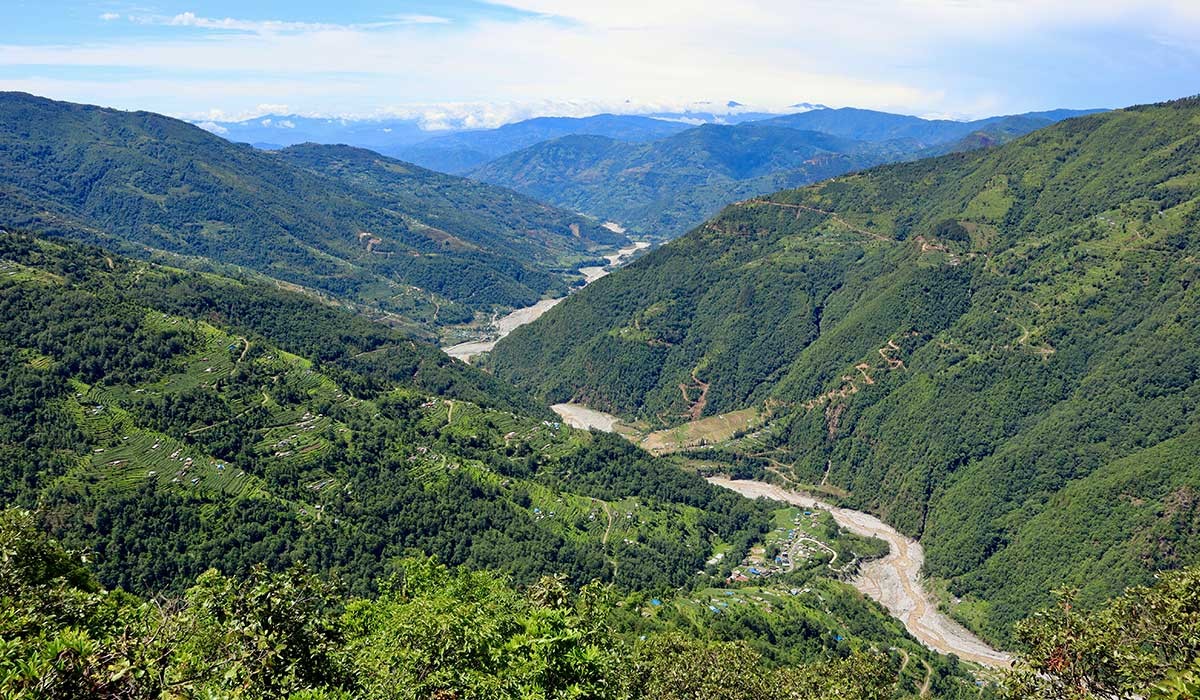
FAQs About Helambu Trek Nepal
How long is Helambu Trek?
The standard duration of the Helambu Trek is around 5 to 7 days. The length of the trek also will also depend on the itinerary route and pace as well. Your itinerary plan with Marvel Adventure can be adjusted to be shorter or longer based on your preference and fitness level.
How do I get from Kathmandu to Helambu?
The Helambu Trek starts from Sundarijal, which is at a distance of about 18km from Kathmandu. You can reach Sundarjil in about an hour via a private car or jeep; in case you take public transport, it may take up to 1.5 to 2 hours.
What is Helambu famous for?
Helambu si famous for Hyolmo (Yolmo) and Tamang communities. Tibetan Buddhist heritage, lush biodiversity and Ama Yangri Peak are other popular highlights of this trek.
Do I need a guide for 5-day Helambu Trek?
Hiring a guide is mandatory for all high-altitude treks in Nepal. Guides will navigate the trail, help communicate with the locals, and take care of health and safety. They will also provide valuable insights into the region.
Is there clean drinking water on the trek?
Yes, there are clean drinking water stations along the way, but the water must be treated before consumption. You can also buy bottled water and boiled water at the teahouses/guesthouses.
What is the highest altitude reached during the Langtang Helambu Trek?
The highest point of this entire trek is Ama Yangri Peak which is at the elevation of 3,771 meters. This is an optional side trip from Tarkegyang that offers the best panoramic views of the surrounding peaks.
Is acclimatization required for this trek?
Unlike the other high-altitude treks, the Helambu Trek is below 4,000 meters. So the risk of altitude sickness is low. Still, it is very crucial to acclimatize properly to stay on the safer side.
What kind of accommodation is available on the trek?
The accommodations in Helambu offer basic and comfortable. There are common dining places, shared bathing facilities, limited Wi-Fi, and charging facilities.
What type of food is available during Helambu trekking?
During this trek, you can enjoy a variety of local and international meals. Popular dishes include Dal Bhat, Thukpa and Momo. There are vegetarian and limited vegan options available at the teahouse.
Is travel insurance necessary for this trek?
Yes, travel insurance is strongly recommended for this trek. Even if the Helambu is not a high-risk trek, accidents, altitude sickness and unforeseen circumstances can occur. So, it is necessary to get comprehensive insurance for the trek.
